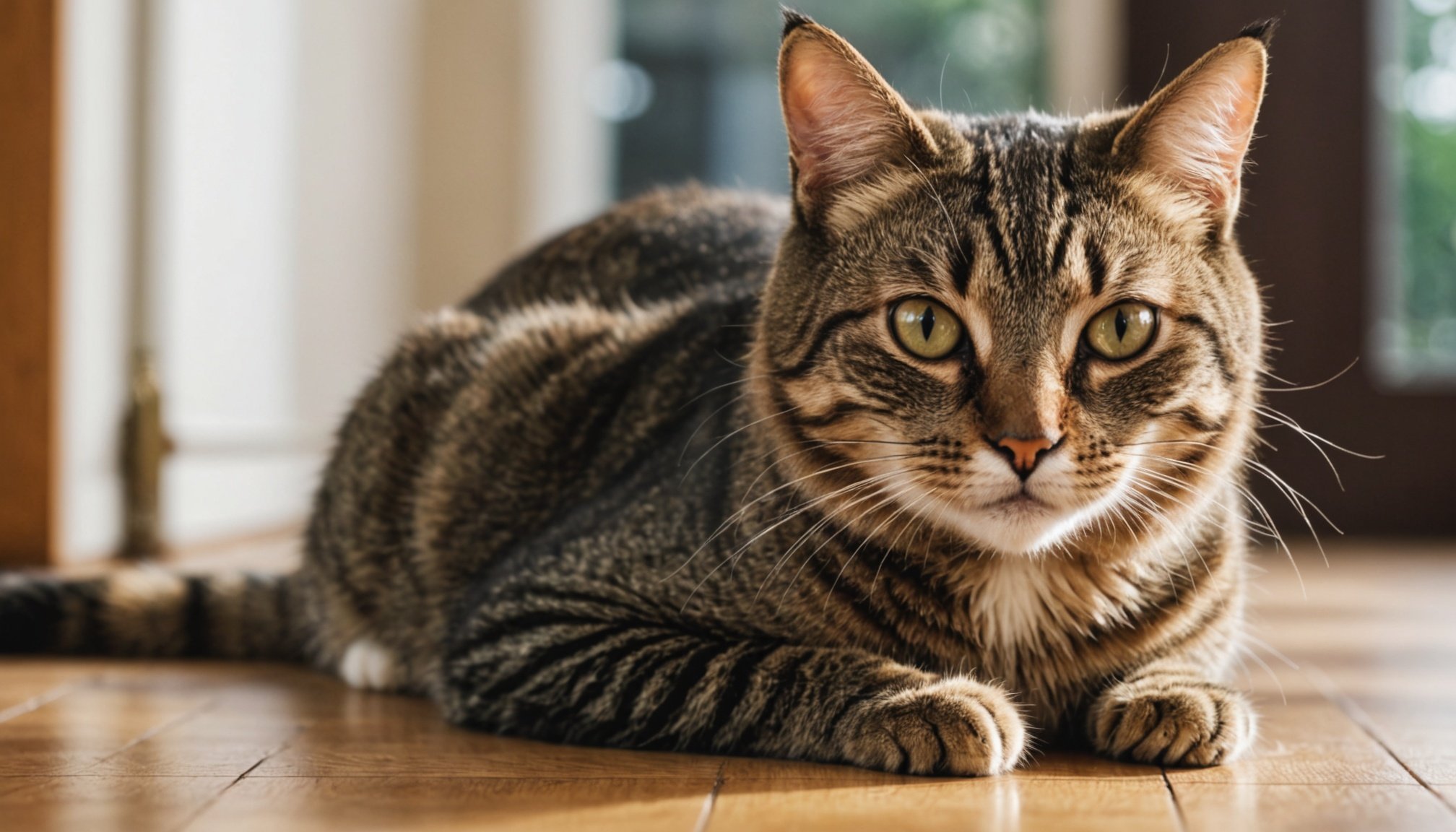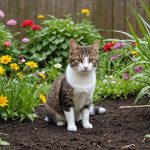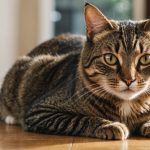Cats are curious by nature, making it essential to create a safe environment for them to explore. Accidents and injuries can happen in the blink of an eye, but with the right strategies, you can protect your furry friend. From securing hazardous items to providing safe play zones, effective cat-proofing helps ensure your home remains a haven for your pet. Discover practical tips to safeguard your home and keep your feline companion happy and healthy.
Importance of Cat-Proofing Your Home
Creating a safe environment for your feline friend is crucial.
A lire également : Essential First Aid Steps for Treating Cat Bites from Venomous Snakes or Insects
Cat safety is an essential consideration for any pet owner. Many common household items can pose significant risks to curious cats. Electrical cords, for example, can lead to severe injuries if chewed. Similarly, open windows without screens can be a dangerous escape route for adventurous cats.
Common Household Hazards
Understanding and mitigating these risks is key to ensuring home safety for cats. Potential hazards include:
Avez-vous vu cela : Essential First Aid Steps for Treating Cat Bites from Venomous Snakes or Insects
- Toxic plants such as lilies and poinsettias
- Small objects that can be swallowed
- Cleaning products that might be ingested
Potential Injuries and Accidents
A failure to cat-proof your home can result in various injuries or accidents. Cats can suffer from poisoning, choking, or even fractures from falls. Ensuring a safe environment helps prevent these unfortunate incidents.
Benefits of a Cat-Proof Home
Creating a cat-proof home benefits both your pet and you as an owner. A safer environment means fewer vet visits and a healthier, happier cat. Moreover, it provides peace of mind, knowing your feline friend can explore without constant supervision.
In the words of a seasoned veterinarian, "A cat's curiosity is only rivaled by its vulnerability. It's our job to protect them." This underscores the importance of making your home a safe haven for your beloved pet.
Identifying Hazardous Items
Ensuring cat safety involves vigilance and precaution.
Common Toxic Plants and Substances
The presence of hazardous household items like certain plants can jeopardize your cat's well-being. Lilies, poinsettias, and philodendrons are among the most common toxic plants. These can cause severe reactions if ingested. Removing or relocating such plants is crucial for maintaining a safe environment.
Dangerous Objects
Small items and electrical cords are also hazardous household items that require attention. Cats are naturally curious and may chew on cords, risking electrical shock. Additionally, small objects like buttons or rubber bands can be swallowed, leading to choking or intestinal blockages. It's important to regularly check for and secure these items to enhance cat safety.
Chemicals and Cleaning Supplies
Household chemicals and cleaning products are another category of hazardous household items. Many of these substances contain ingredients that are toxic to cats. For example, bleach and ammonia can cause respiratory distress or poisoning if ingested. To ensure cat safety, store all chemicals in locked cabinets or out of reach.
"Preventing access to harmful substances is a simple yet effective way to keep your pet safe," advises a pet safety expert, emphasizing the importance of vigilance in protecting your feline companion.
Creating Safe Spaces for Your Cat
Designing a home that caters to your cat's instincts is essential for its well-being.
Designating Cat-Friendly Zones
Establishing cat-friendly areas within your home is a proactive step to ensure your feline's safety and happiness. These zones should be free from hazardous items, providing a secure environment for your pet to roam. Designate specific rooms or corners where your cat can feel at ease, encouraging exploration and play.
Importance of Vertical Spaces
Cats are natural climbers, and vertical spaces are vital for their mental and physical stimulation. By incorporating shelves, cat trees, or wall-mounted perches, you create safe spaces for cats to climb and explore. These vertical zones allow your cat to observe its surroundings from a height, which is instinctively comforting.
Providing Cozy Hiding Spots
Cats often seek out cozy hiding spots for security and comfort. Creating these cat-friendly areas involves adding soft, enclosed spaces like covered beds or boxes. These retreats offer your cat a sense of safety, allowing it to retreat when feeling stressed or overwhelmed.
"Cats need both high and low spaces to feel secure," notes a feline behaviorist, emphasizing the importance of a well-designed home environment for your pet's comfort.
Furniture Protection Strategies
Keeping your furniture safe from feline antics is achievable with the right approach.
Safeguarding from Scratching
Protecting furniture from your cat’s scratching habit involves a combination of strategies. Protective covers made from durable materials can shield surfaces from damage. Consider using slipcovers or blankets that are both functional and aesthetically pleasing. Additionally, investing in cat-friendly materials like microfiber, which resists claw marks, can be beneficial.
Using Protective Covers and Materials
Employing protective covers is a straightforward way to guard against scratches. These covers not only protect but also extend the life of your furniture. Choose materials that are easy to clean and maintain. Furthermore, integrating cat-friendly materials into your furniture choices can deter scratching. Fabrics like leather or tightly woven textiles are less appealing to cats.
Redirecting Scratching Behavior
Training your cat to redirect its scratching behavior is crucial. Provide scratching posts or pads in strategic locations throughout your home. Encourage your cat to use these alternatives by placing them near favorite scratching spots. Positive reinforcement, such as treats or praise, when your cat uses the post, can also aid in scratching prevention.
"Redirecting your cat's instinctive behavior is key to protecting your home," advises a pet behavior expert. This underscores the importance of combining protective covers and training to maintain a harmonious home environment.
Securing Electrical Cords and Wires
Ensuring cat safety requires effective cord management.
Risks Associated with Exposed Cords
Exposed electrical cords and wires pose significant risks to your feline friend. Cats may chew on these cords, leading to electrical shocks or burns. Such incidents can cause severe injuries, making it essential to cat-proof electrical cords.
Best Practices for Cord Management
To enhance safety for cats, it is crucial to implement effective cord management strategies. Start by organizing cords and keeping them out of reach. Use cord clips or ties to bundle them together, reducing the chance of entanglement. Additionally, positioning furniture to block access can prevent curious cats from reaching these potential hazards.
Products Designed to Protect Cords
Several products are available to help cat-proof electrical cords. Consider using cord covers or sleeves made of durable materials that deter chewing. These protective solutions can be easily installed and provide an added layer of safety.
"Investing in cord protection is a proactive step in pet safety," advises a pet safety specialist, emphasizing the importance of safeguarding your home environment.
By following these practices and utilizing protective products, you can significantly reduce risks and ensure a safer home for your cat.
Managing Toxic Plants
Ensuring a safe environment involves choosing the right greenery.
Common Toxic Plants
Certain household plants can be hazardous to cats, leading to severe health issues if ingested. Lilies, poinsettias, and philodendrons are among the most common toxic plants. Their ingestion can result in symptoms ranging from mild irritation to severe organ damage. It's crucial to identify and remove these plants to maintain a safe environment for your feline friend.
Non-Toxic Plants for Cats
For a cat-friendly home, consider incorporating non-toxic plants that provide beauty without the risk. Some safe options include:
- Spider plants
- Bamboo palms
- Boston ferns
These alternatives not only enhance your living space but also ensure your cat's safety. Non-toxic plants are an ideal choice for pet owners who wish to enjoy greenery without compromising their pet's health.
Care Tips for Non-Toxic Greenery
Maintaining non-toxic greenery requires attention to light, water, and soil conditions. Ensure that your chosen plants receive adequate sunlight and water according to their specific needs. Regularly check for pests or diseases to keep your plants healthy. By following these care tips, you can enjoy a vibrant and safe home environment for both you and your cat.
Preventing Access to Dangerous Areas
Ensuring home safety involves strategic planning and implementation.
Identifying Risky Zones
Cats are naturally curious, making it essential to cat-proof dangerous areas within your home. Common risky zones include kitchens, garages, and laundry rooms. These spaces often contain hazardous items like sharp objects, chemicals, and small appliances that can pose significant threats to your feline friend.
Strategies for Keeping Cats Away
Implementing effective strategies is crucial for maintaining home safety. Start by organizing and securing potentially harmful items. Use pet-safe latches on cabinets and drawers to restrict access. Additionally, ensure that all cleaning supplies and chemicals are stored in high, inaccessible places.
Installation of Barriers and Gates
For enhanced protection, consider installing barriers and gates to keep cats out of hazardous zones. Baby gates or pet barriers can be effective in blocking entry to specific areas. These physical barriers not only prevent access but also provide peace of mind, knowing your cat is safe from potential dangers.
"A well-placed gate can make all the difference in ensuring a cat-safe home," a pet safety expert suggests, highlighting the importance of proactive measures in creating a secure environment.
By identifying risky zones and implementing these strategies, you can significantly reduce the risks and ensure a safer home for your cat.
Enhancing the Environment for Play and Exercise
Providing a stimulating environment is crucial for your cat's well-being.
Importance of Stimulation and Exercise
Cats thrive in stimulating environments that cater to their natural instincts. Regular exercise is essential for maintaining a healthy weight and preventing behavioral issues. By creating cat play areas, you can encourage physical activity and mental engagement, which are vital for your feline's overall health.
Ideas for Engaging Toys and Activities
Incorporating a variety of toys and activities can transform your home into a stimulating environment. Consider toys like feather wands, laser pointers, and puzzle feeders that challenge your cat's agility and intellect.
- Feather wands for interactive play
- Puzzle feeders to stimulate the mind
- Laser pointers for chasing games
These options not only enhance cat play areas but also strengthen the bond between you and your pet.
Creating Interactive Spaces
Designing interactive spaces within your home can promote both mental and physical health. Install wall-mounted shelves or tunnels to create vertical cat play areas. These additions allow your cat to explore and satisfy its climbing instincts.
"A well-designed play area can significantly improve a cat's quality of life," notes a feline behavior expert, emphasizing the importance of engaging environments for your pet's happiness and health.
Visual Aids and Checklists for Cat-Proofing
Effective tools for ensuring a safe environment for your feline friend.
Importance of Visual Aids
Incorporating visual aids into the cat-proofing process can significantly enhance safety measures. These tools help pet owners identify potential hazards quickly and efficiently. Visual representations, such as diagrams or illustrations, make it easier to understand complex safety guidelines. Utilizing these aids can streamline the cat-proofing checklist, ensuring that no critical steps are overlooked.
Sample Checklists for Pet Owners
A well-structured cat-proofing checklist is essential for maintaining a secure home environment. Here is an example of items to consider:
- Inspect and secure all electrical cords
- Remove or relocate toxic plants
- Store cleaning products in locked cabinets
- Install barriers and gates for risky zones
- Regularly check for and remove small objects
These checklists serve as a practical guide for pet owners, ensuring comprehensive safety coverage.
Tips for Regularly Assessing and Updating Safety Measures
Regular assessment is crucial in the cat-proofing process. As your cat grows or new items are introduced into your home, updating your cat-proofing checklist is necessary. Schedule periodic reviews of your home’s safety setup to adapt to any changes.
"Consistent evaluation of your home's safety measures ensures a secure environment for your cat," advises a pet safety expert. This practice underscores the importance of vigilance in maintaining a cat-proof home.
Real-Life Examples of Successful Cat-Proofing
Insights from cat owners who have mastered the art of safety.
Case Studies of Cat-Proofing Success
Many cat owners have shared their cat-proofing success stories, offering valuable lessons for others. For instance, one owner transformed their home by implementing practical examples such as installing baby gates and using cord protectors. Another owner focused on removing toxic plants and securing cleaning supplies, creating a safer environment for their curious feline.
Lessons Learned and Tips Shared
From these cat-proofing success stories, several key tips have emerged. Owners emphasize the importance of vigilance and regular home assessments. They recommend creating a checklist to ensure all potential hazards are addressed. Additionally, adapting strategies to fit different home layouts is crucial. For example, in smaller spaces, vertical climbing areas can maximize room for your cat to explore.
Adapting Strategies for Different Home Layouts
To adapt cat-proofing success stories for various home setups, consider the following:
- Use vertical space in apartments
- Implement barriers in open-plan homes
- Customize furniture protection for unique layouts
"Every home is different, but the principles of safety remain the same," notes a seasoned cat owner, highlighting the universal applicability of these practical examples. By learning from others, you can tailor strategies to fit your specific needs and ensure a cat-safe environment.














